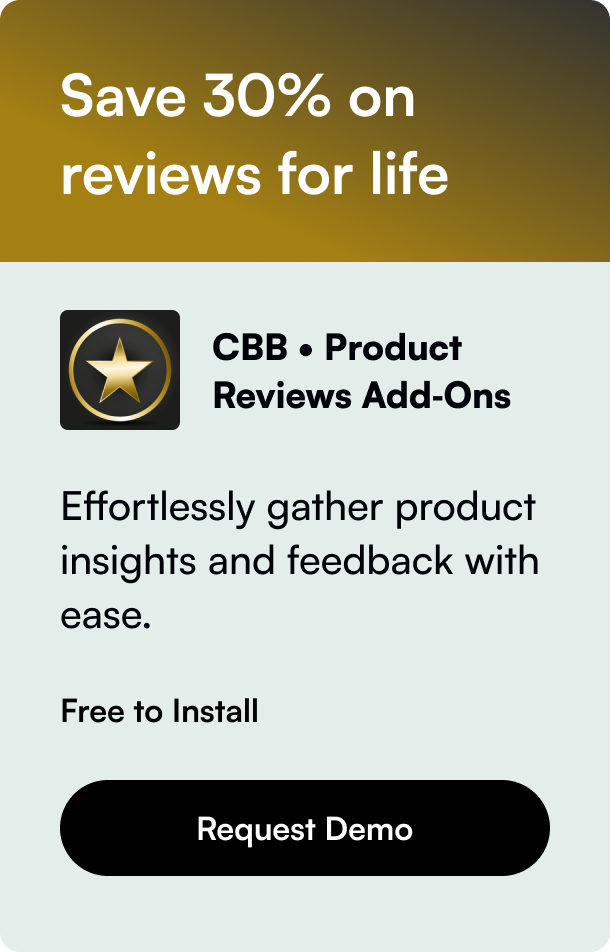Table of Contents
- Introduction
- Getting Started with Klaviyo-Shopify Integration
- Navigating Klaviyo Features and Data
- Advanced Klaviyo Features
- Data-Informed Decision Making
- Conclusion and Short Recap
Introduction
Have you ever come across an online store that somehow always knows exactly what to offer you and when to reach out? That’s no coincidence; it’s the magic of integrated marketing automation. In a bustling digital marketplace, tools like Klaviyo are becoming indispensable for e-commerce businesses, and Shopify store owners are some of the primary beneficiaries. In this guide, we'll delve into how to use Klaviyo in Shopify to revolutionize your customer engagement and sales strategy.
Why Klaviyo?
Klaviyo is more than a marketing tool; it’s a growth engine for e-commerce platforms like Shopify. By syncing customer data and employing targeted message delivery, Klaviyo empowers users to create personalized shopping experiences for their customers, leading to increased loyalty and revenue.
Scope of This Post
We will cover the essentials: from setting up Klaviyo's Shopify integration, optimizing email and SMS campaigns, to utilizing data-driven insights for strategic scaling. And remember, this tailored approach is not just an added value — it can be your competitive edge!
Unique Aspects of This Guide
Unlike the avalanche of generic advice online, we focus on actionable insights. Plus, we’ll discuss potential pitfalls you might encounter and how to navigate them — consider this post a roadmap to mastering Klaviyo in your Shopify store.
Getting Started with Klaviyo-Shopify Integration
Integrating Klaviyo with your Shopify store is your first step to unlocking data-driven marketing potential. This involves a few key steps — but worry not, we'll break it down for you.
Pre-Integration Checklist
Before you rush into integrating Klaviyo and Shopify, make sure to: - Disconnect any previous email service provider integrations if applicable. - Have a clear understanding of the customer data and metrics you want to sync.
Step-by-Step Integration
Follow these steps to ensure a clean integration: 1. Begin with the Basics: Log into your Klaviyo account, navigate to 'Integrations', and find Shopify. 2. Enter Your Store URL: Provide your Shopify store URL when prompted and confirm your preferred sync settings. 3. Installation: After providing the necessary permissions, Klaviyo will create an app within your Shopify store. This syncs your customer profiles, their orders, and site-tracking data.
Navigating Klaviyo Features and Data
The real magic happens post-integration. Let’s explore some features you might find yourself using frequently.
Onsite Tracking with Klaviyo
There are two crucial types of onsite tracking: - Active on Site: Identifies active site visitors for targeted campaigns. - Viewed Product: Pinpoints which products a visitor has shown interest in.
Enabling these features equips you with data to tailor your customer’s shopping experience with a personal touch.
Managing Email and SMS Subscribers
Growing your subscriber list is paramount. Klaviyo effectively syncs subscribers through various channels but remember, respecting user consent is crucial. Therefore, be transparent and maintain clear opt-in and opt-out mechanisms.
Advanced Klaviyo Features
Unlocking Klaviyo’s true potential requires delving into its more advanced automation and segmentation capabilities.
Behavioral Targeting
Klaviyo excels in behavioral targeting using real-time data. By creating dynamic segments based on customer behavior, you can send targeted campaigns that resonate with each subscriber’s shopping experience.
Creating High-Converting Email Campaigns
Klaviyo offers an array of tools to create compelling email campaigns. Utilize its rich template library and A/B testing to hone in on what captures your audience's attention.
Automating the Marketing Journey with Flows
Flows in Klaviyo are automation sequences triggered by specific customer behaviors. Here, the key is relevance and timing. Whether it’s a welcome series for a new subscriber or an abandoned cart reminder, your aim should be accurately pinpointing and addressing customer motivations at each stage of their journey.
Data-Informed Decision Making
Data is the cornerstone of Klaviyo. Using its robust analytics, you can refine your marketing strategy based on customer interactions, campaign outcomes, and predictive analytics governing shopping behavior.
Tracking Customer Lifetime Value (CLV)
Prioritizing customers with high CLV is a solid strategy for sustainable growth. Identify these segments based on previous shopping behavior and nurture them with personalized campaigns.
Conclusion and Short Recap
To wrap up, how to use Klaviyo in Shopify is all about integrating systems, understanding and leveraging customer data, and employing automation to deliver personalized marketing campaigns that drive growth. Each of these should now be armed with the knowledge to implement these strategies effectively.
FAQ Section
Q: How can I ensure my Klaviyo emails don't end up in spam? A: Focus on hygiene practices such as proper segmentation, maintaining a healthy subscriber list, warming up your IP if necessary, and adhering to best email practices.
Q: Can Klaviyo help reduce cart abandonment rates? A: Yes, by using Klaviyo’s automated abandoned cart sequences, you can remind customers of their incomplete purchases and entice them back to complete the sale.
Q: Will Klaviyo integrate with other tools I use in my Shopify store? A: Klaviyo boasts over 200 integrations, making it highly likely that it will work with other tools you utilize in your Shopify arsenal.
Taking the first step towards Klaviyo mastery also requires taking calculated actions based on insights derived from data, keeping your marketing wheels turning and the revenue flowing.








